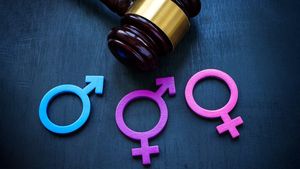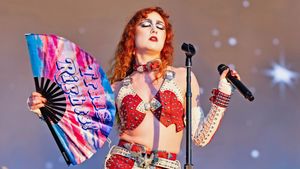If you’re looking for Madea (Tyler Perry in front of the camera in drag), or Black-faced versions of Sex in the City or He’s Just Not That Into You, then Mr. Perry’s adaptation of Ntozake Shange’s 1975 womanist choreopoem For Colored Girls Who Have Considered Suicide/When the Rainbow Is Enuf will gravely disappoint you.
And if you are also looking for Perry’s high-profile ensemble of African American actresses -- Janet Jackson, Loretta Devine, Kimberly Elise, Thandie Newton, Phylicia Rashad, Anika Noni Rose, Tessa Thompson, Kerry Washington, Whoopi Goldberg, and Macy Gray -- to perform as "Big Mammas," "Hoochie Mommas," and "Welfare Mommas" mouthing off "Madea-isms," these sister-girls will disappoint you too; they have more depth, dignity and dimensionality to their character development than that.
While the movie, in my opinion, is a must see, it won’t be blockbuster hit. You won’t have to worry about waiting in long lines. I went to view the film at prime time with an audience of six of us -- all women -- in the theater.
Some critics having already bad-mouthed For Colored Girls as an anti-male melodrama, emasculating black males -- who would sit for 134 minutes of that?
But those critics are wrong, and let me give you some reasons why.
For Colored Girls illustrates the universal sisterhood of struggle, strife, and survival in which some women find themselves in with certain types of relationships with men.
These characters in the film are you, me, and us all at certain junctures in our life’s journey. And For Colored Girls reminds us about the ongoing "dark phrases" of womanhood that women of all colors of the rainbow, even in our supposedly "post-feminist" era of 2010, continue to confront, like spousal abuse, incest, rape, infanticide, and infidelity, to name just a few.
However, with the film set primarily in Harlem, many will see the film as solely the typical "black faces" of African American women.
But that was neither the intent of Shange’s play, nor is it the intent of Perry’s film.
"Driving along Highway 101 one morning, she found herself passing beneath the arc of a double rainbow. Seeing the entire rainbow take shape above her, Shange realized that she wanted to live, that she had to live; she had something to say, not only about the fragility of her own existence, but about the lives of the other colored girls she knew and loved and imagined," Hilton Als wrote in "Color Vision: Ntozake Shange’s Outspoken Art" in a recent New Yorker.
more on next page...
\\\
(continued)
Ntozake Shange’s For Colored Girls Who Have Considered Suicide/When the Rainbow Is Enuf was written during the height of the second wave feminist movement, giving voice and visibility to an era deluged with white women’s scholarship and sensibilities, and an era rife with discrimination with not only their racial and ethnic biases but also with their class and sexual orientation biases.
Shange was part of the burgeoning black women writers’, poets’, and artists’ era of the 1970s where Toni Morrison published her first novel -- and still my favorite -- The Bluest Eye. Alice Walker, Maya Angelou, Nikki Giovanni, Sonia Sanchez, and Toni Cade Bambara, to name a few, are some of the fore-sisters of the era.
With her signature style of writing -- the choreopoem -- blending music, dance, poetry, and an amalgamation of what she heard on the street, Shange’s play has influenced this generation of spoken-word and performance artists.
"I like the idea that letters dance. ...I need some visual stimulation, so that reading becomes not just a passive act...but demands rigorous participation. The spelling result from the way I talk or the way the character talks, or the way I heard something said," Shange wrote in Claudia Tate’s Black Women Writers at Work.
Perry’s directorial style in For Colored Girls captures Shange’s poetic style in each of his characters, with of course a few of his own cinematic flourishes. But none where there was room for Madea to surprisingly appear.
While many may view For Colored Girls as a melodramatic mess of black women’s misery, the play is about women’s empowerment.
The film is about teaching and illustrating to women how to have decision-making power of their own, access to information and resources for making proper decisions, having a range of options from which they can make good choices, having the ability to exercise their assertiveness, and having positive thinking of one’s ability to make changes in their lives as empowered women.
For Colored Girls is not only for colored girls because it offers a pathway to self-growth, finding our authentic power, and discovering the divine in one’s self.
In the closing scene of the film one of the women says, "i found god in myself & i loved her/i loved her fiercely."
Aren’t we all looking for that woman?



























































































































